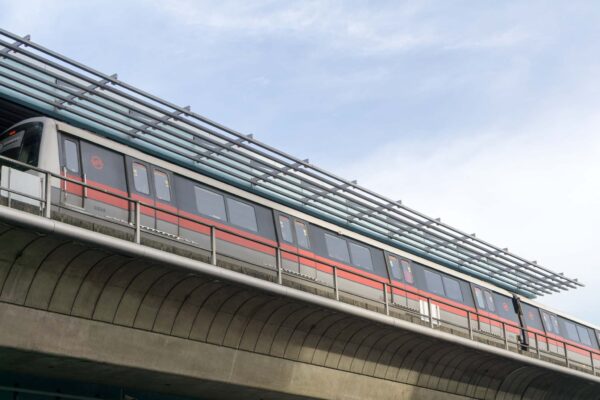
We love to complain about our SMRT. After the most defining moment of MRT breakdowns in Singapore last year, spanning a total of 6 days, the investigation into the 2024 derailment is complete, and we get to learn some horrible things about SMRT. It’s a total shitstorm.
A quick recap of the derailment incident. A train developed a problem on 25 Sep 2024. During its withdrawal from service, it derailed and wrecked 2.55 km of rail. Train services were subsequently disrupted along a segment of the East-West Line for 6 days, with repairs finally completing on 30 Sep 2024.
You can read about the investigation findings from the Straits Times (and another one also from the Straits Times). I’ll like to summarise and highlight the most shocking points:
- A sensor had detected significantly elevated temperatures on the defective axle box near Lavendar station. A SMRT staff member ignored the anomaly alarm.
- The train manufacturer, Kawasaki Heavy Industries (KHI), stipulated overhauls every 500,000 km travelled. SMRT decided the to change this interval to 750,000 km travelled. The affected train had travelled 690,000 km.
- KHI proposes detailed visual checks of the axle boxes every three months, but SMRT decided it should be every six months instead. SMRT also does a different, presumably more casual, visual check every three weeks, which does not include specific detailed inspections called for by KHI every thee months.
I think just these three points are damning enough of SMRT’s criminal negligence and incompetence. We have been talking about SMRT’s “deep-seated cultural problems” since December 2011. In the years since, SMRT has tried to sell us the illusion of progress and their resolve to fix problems with their operations. LTA and our successive transport ministers tell us about how reliability has improved according to their metric. Yet here we are, facing an unprecedented six-day MRT breakdown, a collapse of public transport reliability that is nothing short of a national disgrace.
We’ve heard time and again how SMRT claims to be improving the reliability of its train operations. For example, they’ve boasted about implementing advanced sensor systems to detect potential faults, predict failures, and allow for proactive maintenance. That very sensor system that detected significantly elevated axle box temperatures is precisely what could have notified SMRT of a potential problem, but what did the SMRT staff do about it? That’s right, nothing at all. All that talk was just a show. It was a carefully crafted performance. Just pretend to do something, but beneath the facade, it is still the same old company that is not interested or is unable to make any meaningful change.
We say a leopard never changes its spots. Previously, I had wanted to think that SMRT could find its way back, though it may take many years, a decade or two perhaps. Now, I am not so sure. The failures in SMRT are now at a new level. It is far worse than a cultural problem. The company is the problem. You will need to change out the entire company.
For a staff member to ignore alarms is negligent. Not fixing the system errors which lead to useless alarms is incompetence. That the management did not remedy this situation or know that something needed to remedied is ineptitude.
There is another problem that is more horrific. SMRT, who operates trains, somehow thinks that they are in a better position than KHI, who designed and manufactured the trains, to decide the best maintenance regime and practices. I cannot comprehend how this could ever happen.
Imagine this analogy where you drive a car which you bought from Toyota. Toyota says you need to change the engine oil every 10,000 km. Yes, I know some drivers may push farther occasionally, perhaps to 11,000 km. But would you ever think, no, 10,000 km is not correct, it should be 15,000 km? If Toyota said major servicing is required at 80,000 km, do you think, nah, 120,000 km sounds more correct? If Toyota says brakes should be inspected every 6 months, would you say, that’s not necessary, 12 months is good enough?
I held out some hope that the root cause of this incident might be technically novel and interesting, and that perhaps there may be good learning points. We did learn something mind-blowing — that SMRT thinks they know the trains better than the manufacturer that designed and bult them.
The problem with SMRT clearly goes far beyond an issue of culture. They are not fit to run a train network at all. The problem with SMRT is at every level of the company. At this point, I’m beginning to think there is no way the failures at SMRT can be salvaged. What has become of SMRT is a tragedy.
LTA, which is charged with the supervision and oversight of SMRT, must also be held accountable. Let’s please just stop this Ra Ra show of how our trains are comparable to those in other countries, that things are supposedly getting better, etc. Please stop deluding yourselves. This is the worst rail disruption we’ve ever seen in Singapore.
Does the Ministry of Transport think that a $3M fine commensurate the criminal ineptitude and malfeasance displayed by SMRT? I think the entire SMRT senior management should be investigated for their utter dereliction of duties.
SMRT is perhaps Singapore’s Most Reliable Tragedy. That’s what SMRT is most reliable for. That’s what SMRT stands for.
View Comment Policy